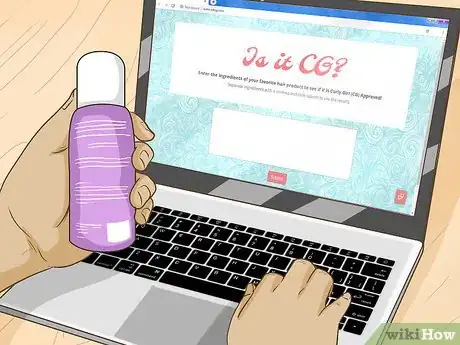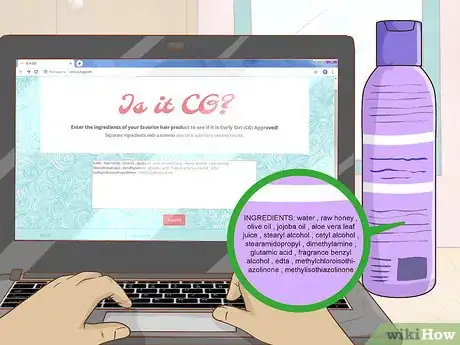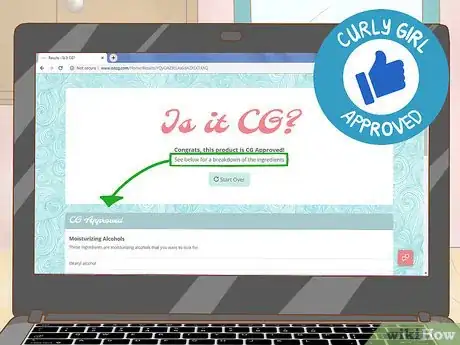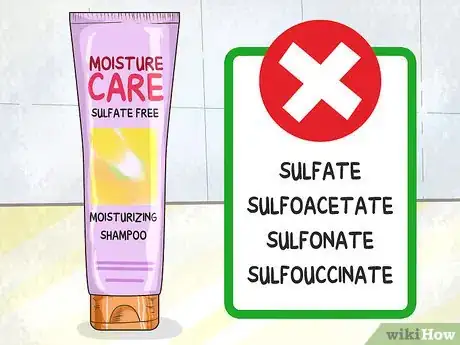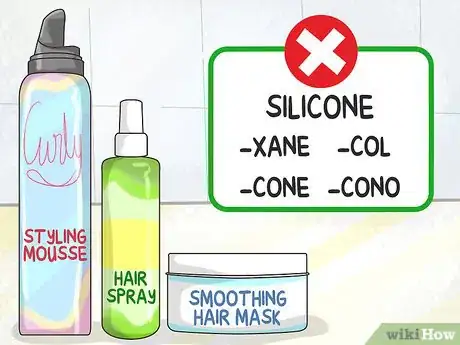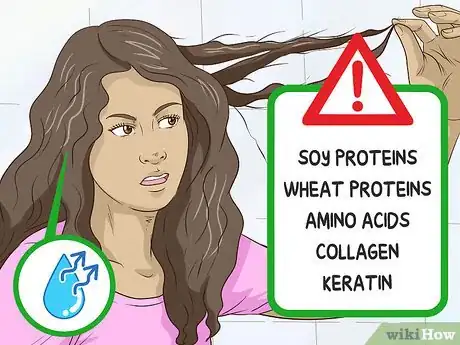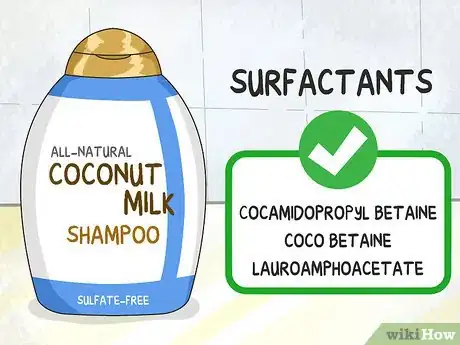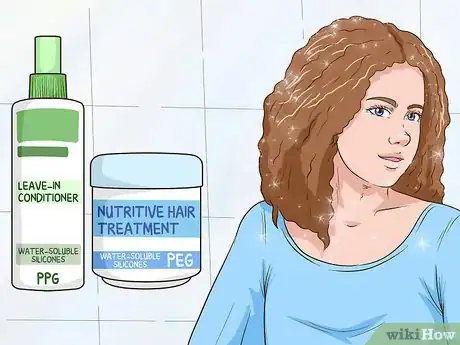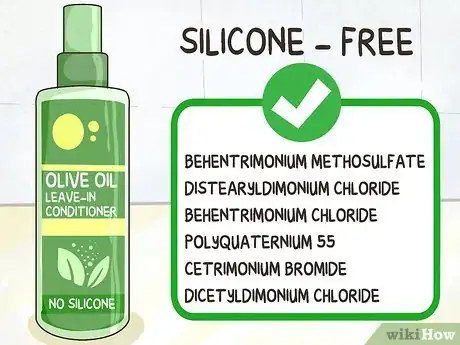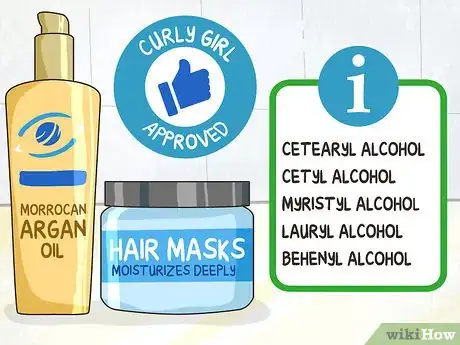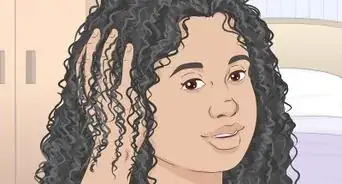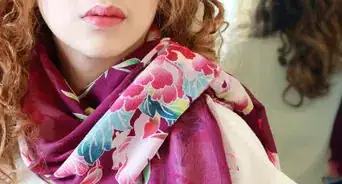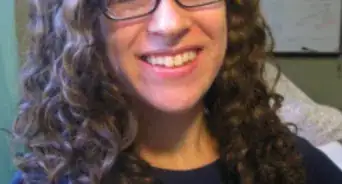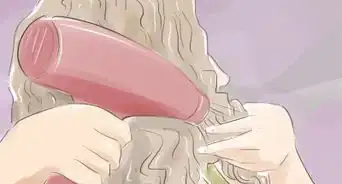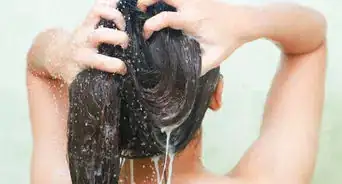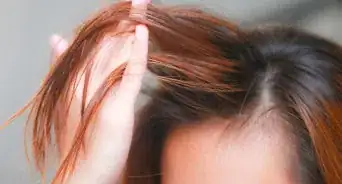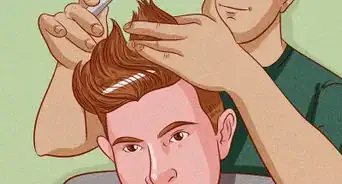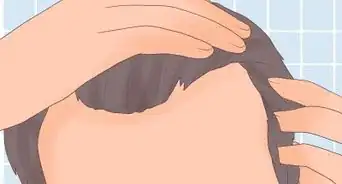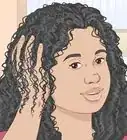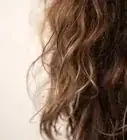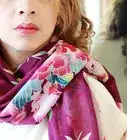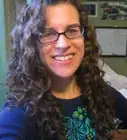This article was co-authored by Courtney Foster. Courtney Foster is a Licensed Cosmetologist, Certified Hair Loss Practitioner, and Cosmetology Educator based out of New York City. Courtney runs Courtney Foster Beauty, LLC and her work has been featured on The Wendy Williams Show, Good Morning America, The Today Show, The Late Show with David Letterman, and in East/West Magazine. She received her Cosmetology License from the State of New York after training at the Empire Beauty School - Manhattan.
There are 10 references cited in this article, which can be found at the bottom of the page.
wikiHow marks an article as reader-approved once it receives enough positive feedback. This article received 25 testimonials and 86% of readers who voted found it helpful, earning it our reader-approved status.
This article has been viewed 959,637 times.
There are many products out there for curly haired girls and guys to choose from, but not all of them are great for your hair. The Curly Girl method, created by Lorraine Massey in her book Curly Girl: The Handbook, is a way of treating curly hair that eliminates damaging products. One easy way to check a product is to put the ingredients into an online analyzer. Otherwise, the key is to look for certain categories of ingredients you need to avoid, such as sulfates and non-water soluble silicones.
Steps
Checking a Curly Girl Ingredient Analyzer
-
1Navigate to a webpage that features a Curly Girl ingredient analyzer. Many websites have a place where you can enter the product's ingredients to determine if they're Curly Girl approved. For instance, visit one of the websites at http://www.isitcg.com/ or https://www.curlsbot.com/.
Tip: If you want to make sure you're using Curly Girl-approved products, try DevaCurl No-Poo or As I Am Coconut CoWash Cleansing Conditioner. You can also use natural products, such as coconut oil or argan oil.
-
2Type in the ingredients from the product. Look on the back of the product for the ingredient list. Add ingredients to the box on the website, making sure to separate each one with a comma or a comma and a space.[1]
- Be sure to spell the ingredients correctly; if you misspell something, the website may sort it into the wrong category because it doesn't recognize it.
Advertisement -
3Hit "Submit" and look at the results. Once you hit "Submit," you'll be redirected to a second page with your results. The website http://www.isitcg.com/ divides ingredients into "Not CG Approved" and "Probably OK," for instance. If any of the ingredients fall into "Not CG Approved," then you want to avoid that product if you're using CG Approved ones.[2]
- "Probably OK" means that the ingredients didn't directly match ones on the "bad" list or they're on the CG Approved list.
Avoiding Damaging Ingredients
-
1Skip products with sulfates in them. Surfactants dissolve in water and reduce the surface tension on your hair, which helps the product remove dirt from the area. That sounds good, but some surfactants, like sulfates, can also be damaging to your hair, as they strip it of its natural oils. When using the Curly Girl method, avoid products with these ingredients. Look for products that are labeled "sulfate-free" to help you choose the best option for your hair.
- In addition, read the ingredient list to look for sulfates. Even if a product is labeled "sulfate-free," it may still contain sulfate ingredients. That's because the manufacturer is typically referring to more damaging sulfates, such as sodium lauryl sulfate. Go over the ingredient list carefully to find sulfate ingredients before deciding if a product is Curly Girl approved.[3]
- Common sulfates include alkylbenzene sulfonate, sodium cocoyl sarcosinate, ammonium or sodium xylenesulfonate, and dioctyl sodium sulfosuccinate.
- Look for words or endings like "sulfate," "sulfoacetate," "sulfonate," and "sulfouccinate."
-
2Avoid products with silicone ingredients that aren't water soluble. These products tend to build up on your hair over time because they coat your hair to give it shine. They keep moisture from getting into your hair, and to get them out, you need harsh products that contain sulfates. Therefore, it's best to avoid them. Read the ingredient list to find ones with endings like "-xane," "-cone," "-col," and "-conol" so that you can avoid products that contain them.[4]
- Common ingredients that fall into this category include dimethiconol, cetyl dimethicone, dimethicone, cetearyl methicone, and stearyl dimethicone.
- Use the same rues when buying styling products.
-
3Don't use products with proteins if you're still having hair problems. Sometimes, proteins can make your hair dry and brittle. You're more susceptible to this issue if your hair is coarse, so if you're having this problem, check the ingredient list for proteins.[5]
- Look for things like soy proteins, wheat proteins, amino acids, collagen, and keratin.
Knowing What Ingredients to Look for
-
1Opt for better surfactants in place of sulfates. You still need surfactants sometimes, but you have better options available to you than sulfates. These include ingredients like coco betaine and lauroamphoacetate, just to name a few.[6]
- Other options include sodium cocoyl isethionate, cocamidopropyl betaine, disodium cocoamphodiacetate or cocoamphodipropionate or cocamphodipropionate, or ocoamphoacetate.
-
2Choose products with water-soluble silicones. These silicones are okay to use on curly hair, as they won't build up over time; you can use water to wash them out. Pick ones like hydrolyzed wheat protein hydroxypropyl polysiloxane, dimethicone copolyol, or lauryl methicone copolyol.[7]
- Also look for silicone names that have "PPG" or "PEG" in front of them. That indicates they're water-soluble.
- Silicones are used to help detangle your hair, as well as to add shine.[8]
-
3Look for other ingredients that replace silicones. If you want to avoid silicones altogether, other ingredients can help with lubrication, too. These ingredients aren't silicone-based. Certain types of chlorides can help, for instance.[9]
- Try behentrimonium methosulfate, distearyldimonium chloride, behentrimonium chloride, polyquaternium 55, cetrimonium bromide, or dicetyldimonium chloride.
-
4Opt for hydrating alcohols over drying ones. Most alcohols are drying, so if you see them on the ingredient list, you may want to avoid that product. Exceptions to this rule are hydrating alcohols, which include cetearyl alcohol, cetyl alcohol, myristyl alcohol, lauryl alcohol, and behenyl alcohol.[10]
- Hydrating oils will help you tame your curly hair.
Expert Q&A
-
QuestionHow do you keep a silk press on natural hair that's curly?
 Courtney FosterCourtney Foster is a Licensed Cosmetologist, Certified Hair Loss Practitioner, and Cosmetology Educator based out of New York City. Courtney runs Courtney Foster Beauty, LLC and her work has been featured on The Wendy Williams Show, Good Morning America, The Today Show, The Late Show with David Letterman, and in East/West Magazine. She received her Cosmetology License from the State of New York after training at the Empire Beauty School - Manhattan.
Courtney FosterCourtney Foster is a Licensed Cosmetologist, Certified Hair Loss Practitioner, and Cosmetology Educator based out of New York City. Courtney runs Courtney Foster Beauty, LLC and her work has been featured on The Wendy Williams Show, Good Morning America, The Today Show, The Late Show with David Letterman, and in East/West Magazine. She received her Cosmetology License from the State of New York after training at the Empire Beauty School - Manhattan.
Licensed Cosmetologist After your silk press, wrap your hair at night and pull it forward before wrapping it in a cylinder shape with a silk or satin scarf. Tie the hair down as flat as possible to keep moisture out of your hair. If moisture gets into your hair cuticles, they're going to frizz and your hair will revert back to its natural state.
After your silk press, wrap your hair at night and pull it forward before wrapping it in a cylinder shape with a silk or satin scarf. Tie the hair down as flat as possible to keep moisture out of your hair. If moisture gets into your hair cuticles, they're going to frizz and your hair will revert back to its natural state. -
QuestionWhy don't you give us a list of shampoos and conditioner that are suitable, rather than searching through shelves to find them?
 Sarah ElizaTop AnswererwikiHow policy does not permit recommending brands.
Sarah ElizaTop AnswererwikiHow policy does not permit recommending brands. -
QuestionWhat if the product has only one ingredient from the "avoid" list, and most of them are in the "to look for" list? Can I still use it?
 Community AnswerI wouldn't recommend it. One bad ingredient can cancel out the good.
Community AnswerI wouldn't recommend it. One bad ingredient can cancel out the good.
References
- ↑ http://www.isitcg.com/
- ↑ http://www.isitcg.com/
- ↑ https://www.naturallycurly.com/curlreading/curly-girl-method/the-trick-to-reading-the-label-on-your-curly-hair-products
- ↑ http://www.curlynikki.com/2012/03/curly-hair-product-ingredient-guide.html
- ↑ http://www.curlynikki.com/2012/03/curly-hair-product-ingredient-guide.html
- ↑ http://www.curlynikki.com/2012/03/curly-hair-product-ingredient-guide.html
- ↑ Courtney Foster. Professional Hair Stylist. Expert Interview. 9 December 2019.
- ↑ https://www.naturallycurly.com/curlreading/curly-girl-method/the-trick-to-reading-the-label-on-your-curly-hair-products
- ↑ https://www.naturallycurly.com/curlreading/curly-girl-method/the-trick-to-reading-the-label-on-your-curly-hair-products
About This Article
To figure out if a hair product is approved under the Curly Girl method, the first thing you'll want to do is check out the ingredients list. Avoid products with sulfates in them, since they can strip natural oils from your hair, leaving it dry and damaged. If a product doesn't have sulfates, it should say "sulfate-free" right on the label. You should also watch out for silicone ingredients that aren't water soluble, since they build up in your hair over time. These ingredients usually end in "xane," "cone," "conol," or "col." Alcohol can dry out your hair too, so you'll want to avoid products that list it as an ingredient. However, some alcohols are actually hydrating, like cetyl alcohol and lauryl alcohol, so look up the type of alcohol listed online if you're not sure. To learn how to use the Curly Girl ingredient analyzer to figure out which hair products are approved, keep reading!
